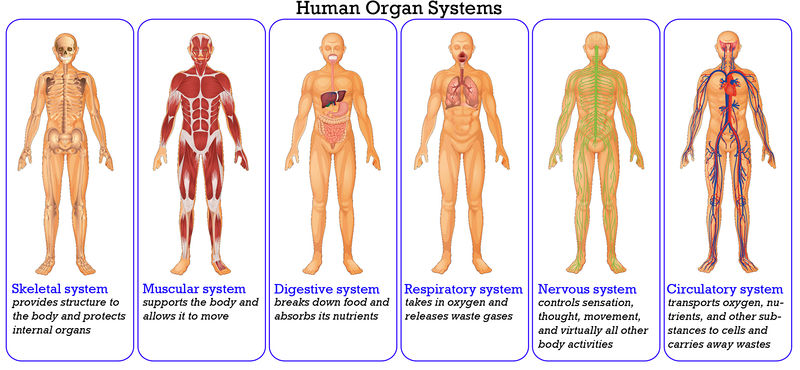If you take a deep breath, put your hand on your chest and breathe out, you will feel that your lung fills with air when you breathe. It may surprise you to know that your respiratory system does a lot more than just coordinate the oxygen that goes in and out of your lungs. Your respiratory system works with the muscular, skeletal and circulatory systems of your body in order to help you speak, smell and breathe. Here you will know "How does the respiratory system work with other systems?"
How Does Respiratory System Work?
The respiratory system does its job when the lungs take in oxygen and get rid of the carbon dioxide while we breathe. The entire process is carried out automatically and begins with the lungs filling up with air, which contains oxygen and other elements. The air then enters the blood stream and flows through the body. Meanwhile, carbon dioxide is collected by red blood cells, delivered back to the lungs and expelled when we breathe out. This entire process repeats itself continuously as we breathe in and out. The muscle located right under the lungs is called the diaphragm and it controls the flow of air. The diaphragm draws the air into the lungs during inhalation; and upon exhalation it expands to push the air out of the lungs. Most adults take anywhere from 12 to 20 breaths every minute.
Watch the following video to know more about how the respiratory system works:
How Does the Respiratory System Work With Other Systems?
Here is a simple explanation as to how the respiratory system interacts with all of the other systems of the body.

1. Respiratory System and the Skeleton
Without the skeletal system, the upper respiratory tract would have no structure at all and would be nothing but soft tissues. There is a long perpendicular plate that is on the ethmoid, which helps to keep the nasal cavity into two sides. This plate is what creates the septum in the nasal passageways.
If the respiratory system doesn't interact with the laryngeal skeleton, you wouldn't be able to speak. The laryngeal skeleton, the cartilage that can be found in the throat, is considered the real vocal cords which let you speak. As the air passes over the vocal cords, they begin to vibrate and create sound. It is the resonance of the throat, along with the sinuses and the thickness of the vocal cords, which create a unique voice for each person.
2. Respiratory System and Circulatory System
The circulatory system works well with the respiratory system to make sure that oxygen-rich blood can flow through your body. That is, your respiratory system supports your circulatory system with air or more specially oxygen which is sent to relative organs via arteries. Then the veins carry the deoxygenated blood to the heart, so it can be replenished.
3. Respiratory System and Digestive System
The respiratory system works with the digestive system as the digestive tract uses contractions from muscles to break down the food and move it through the tract. The digestive system transforms foods into energy to aid our bodily activities. Your respiratory system needs the digestive tract to keep working because the muscles of the respiratory system require fuel to work and they receive that from the digestive system.
4. Respiratory System and Nervous System
The lungs have receptors and sensors that react to deflation, inflation and chemical stimulation. This can ultimately activate the nervous system, resulting in a neutrally controlled response, like a sudden cough or an altered breathing pattern.
5. Respiratory System and Immune System
When trying to find out "How does the respiratory system work with other systems?" you should never neglect immune system. When any foreign particles enter the respiratory system, the immune system releases protection in the form of lymphocytes and macrophages. An inflammatory disease such as asthma is the result of an immune system's improper response.
Besides, the lymph system is responsible for the balance of fluid in the lungs. This, in turn, plays a major role in the immune system where any injury to the lung tissues could lead lymph system to eliminate extra fluids and give immune cells a way to be transported out.
6. Respiratory System and Exocrine System
The respiratory system works with the kidneys to keep the right levels of oxygen in the bloodstream. If the kidneys find the blood oxygen levels are low, they emit erithropoyetin which will encourage additional red blood cells that have oxygen in them to form and bind with hemoglobin so that additional oxygen will be absorbed through the lungs.
